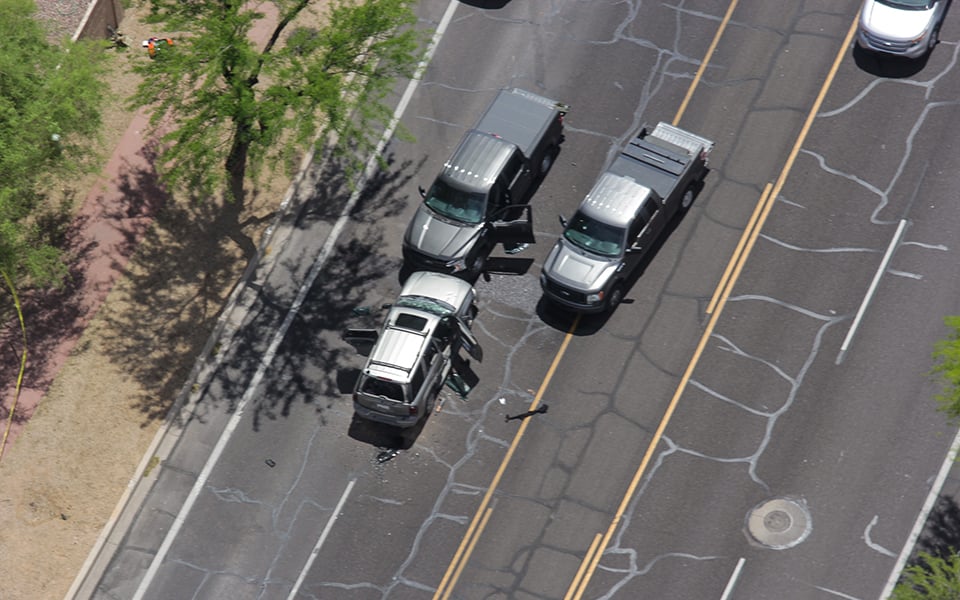

Frank Guy was pruning bushes when he heard the siren. Climbing up on his garden bench to peer over the retaining wall, he saw unmarked trucks trailing an SUV.
A car chase, he recalled thinking.
“As soon as I got down, I heard this huge crash,” Guy said. “It was like a mini atom bomb. It looked like a mushroom cloud of trees and branches and leaves and dust and concrete.”
And then the shooting started.
His wife pleaded for him to come inside to escape the gunfire. His adult stepdaughter dropped to the floor of her bedroom and dialed 911.
“There’s gunfire, there’s an accident,” a breathless Michelle McMaster told the emergency operator.
“How many shots?” the dispatcher inquired.
“How many shots? How many shots? Hundreds!” McMaster shouted into the phone.
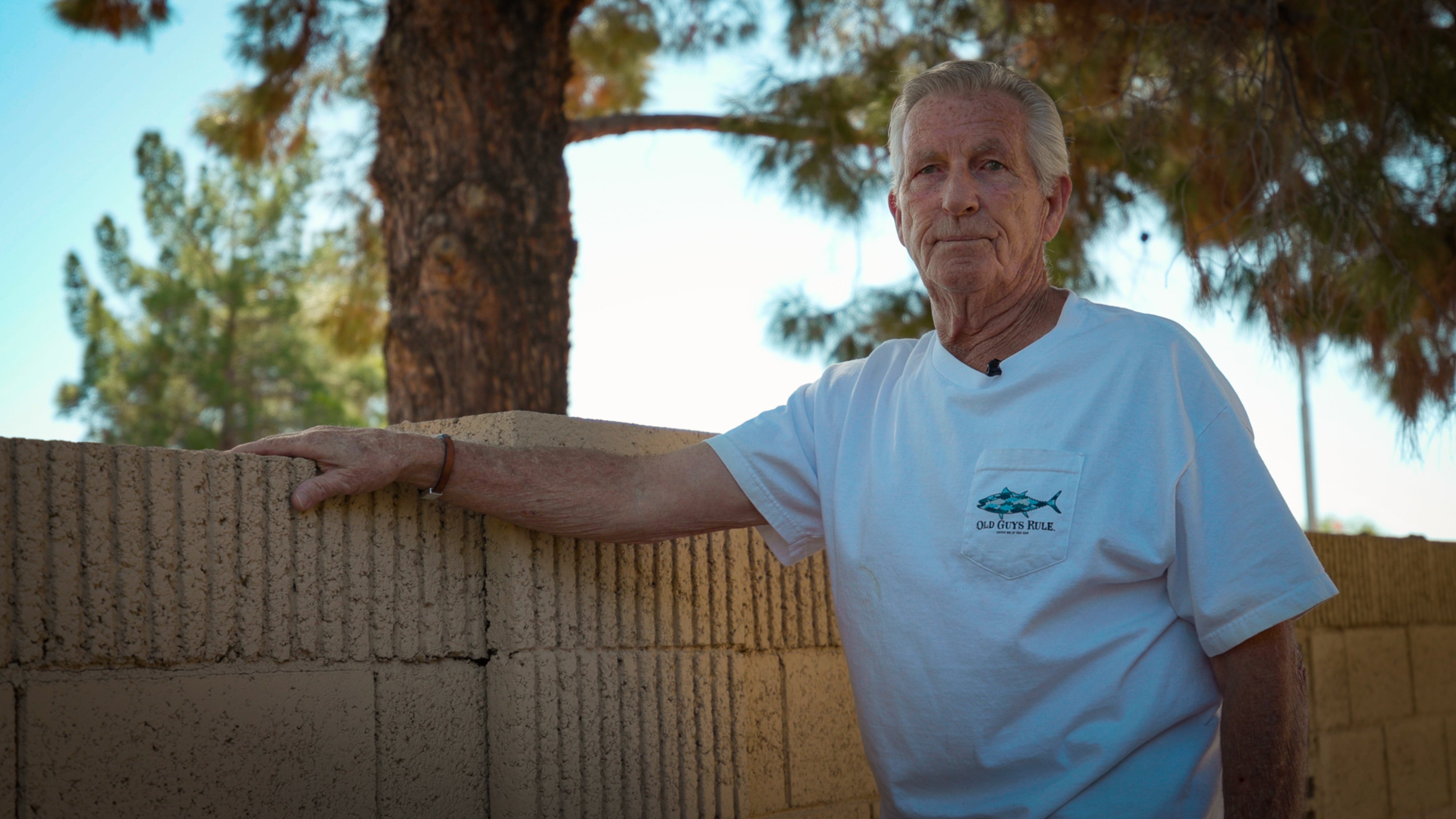
Frank Guy shows reporters how he stood on a bench in his yard April 11 when he heard sirens. He peered over the wall just seconds before a gunfight erupted 400 feet away between federal agents and a suspected human smuggler. (Photo by Joel Farias Godinez/Howard Center)
The chaos that unfolded about 400 feet away was not part of the plan.
Since late March, Homeland Security Investigations agents had been tracking Warren Jose, a suspect in an alleged immigrant smuggling operation out of Sells, the capital of the Tohono O’odham Nation along the Arizona-Mexico border. Agent Chad Lakosky obtained an arrest warrant on April 9 and began planning Jose’s capture.
Because Jose had an arrest record that included allegations of human smuggling, aggravated assault and illegal weapons possession, Lakosky said he called for help from HSI’s Special Response Team, a SWAT unit. Response team agents said they were warned that Jose had a history of not complying with law enforcement and would likely be armed.
Agents planned to arrest Jose on April 11 in the parking lot of a hotel along I-10 just south of metro Phoenix, where his Chevrolet Trailblazer had been spotted the day before. But instead of staying the night, Jose had returned to the border after getting a call about two migrants in Sells who needed transport to Phoenix.
By this point, Jose later told Phoenix police, he was too tired to drive alone and called some friends from the reservation for help. Valentina Valenzuela and Theresa Medina Thomas had been out late partying in Sells and agreed to join Jose on the drive back to Phoenix.
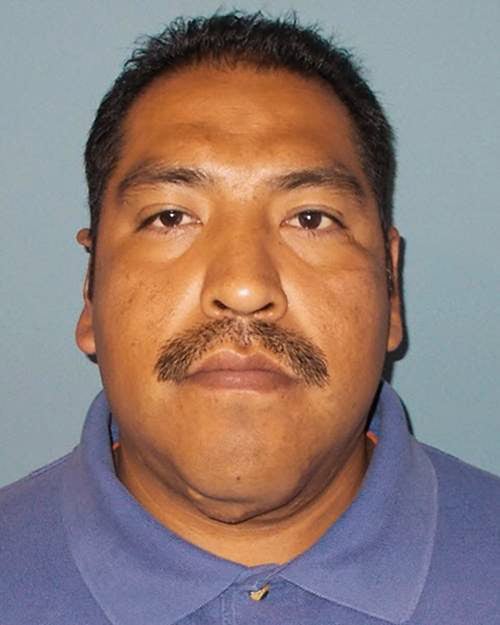
Warren Jose (Arizona Department of Corrections)
Around 4 a.m., the group picked up the two migrants. One of them, Maria Martinez-Luna, 17, later told police that Jose had an AK-47 lying on the front-seat console but had told her not to be afraid because the gun wasn’t for her.
As they drove north, Jose and the two women smoked cigarettes and drugs and passed around a bottle of Bacardi rum, music blaring on the radio.
“We were jamming out,” Jose would later say. Drug paraphernalia was found scattered about the SUV after the shooting.

Warren Jose (Arizona Department of Corrections)
Around 4 a.m., the group picked up the two migrants. One of them, Maria Martinez-Luna, 17, later told police that Jose had an AK-47 lying on the front-seat console but had told her not to be afraid because the gun wasn’t for her.
As they drove north, Jose and the two women smoked cigarettes and drugs and passed around a bottle of Bacardi rum, music blaring on the radio.
“We were jamming out,” Jose would later say. Drug paraphernalia was found scattered about the SUV after the shooting.
A license plate reader picked up the Trailblazer as it approached I-10, alerting the HSI agents that their suspect was nearing. Midway through the trip, Medina Thomas took over the wheel so Jose could sleep, he told police.
Agents had expected Jose to drive back to the hotel where he’d been spotted the day before. But instead of turning east after exiting the interstate, Medina Thomas turned west and headed toward Ahwatukee, separated from the rest of Phoenix by South Mountain.
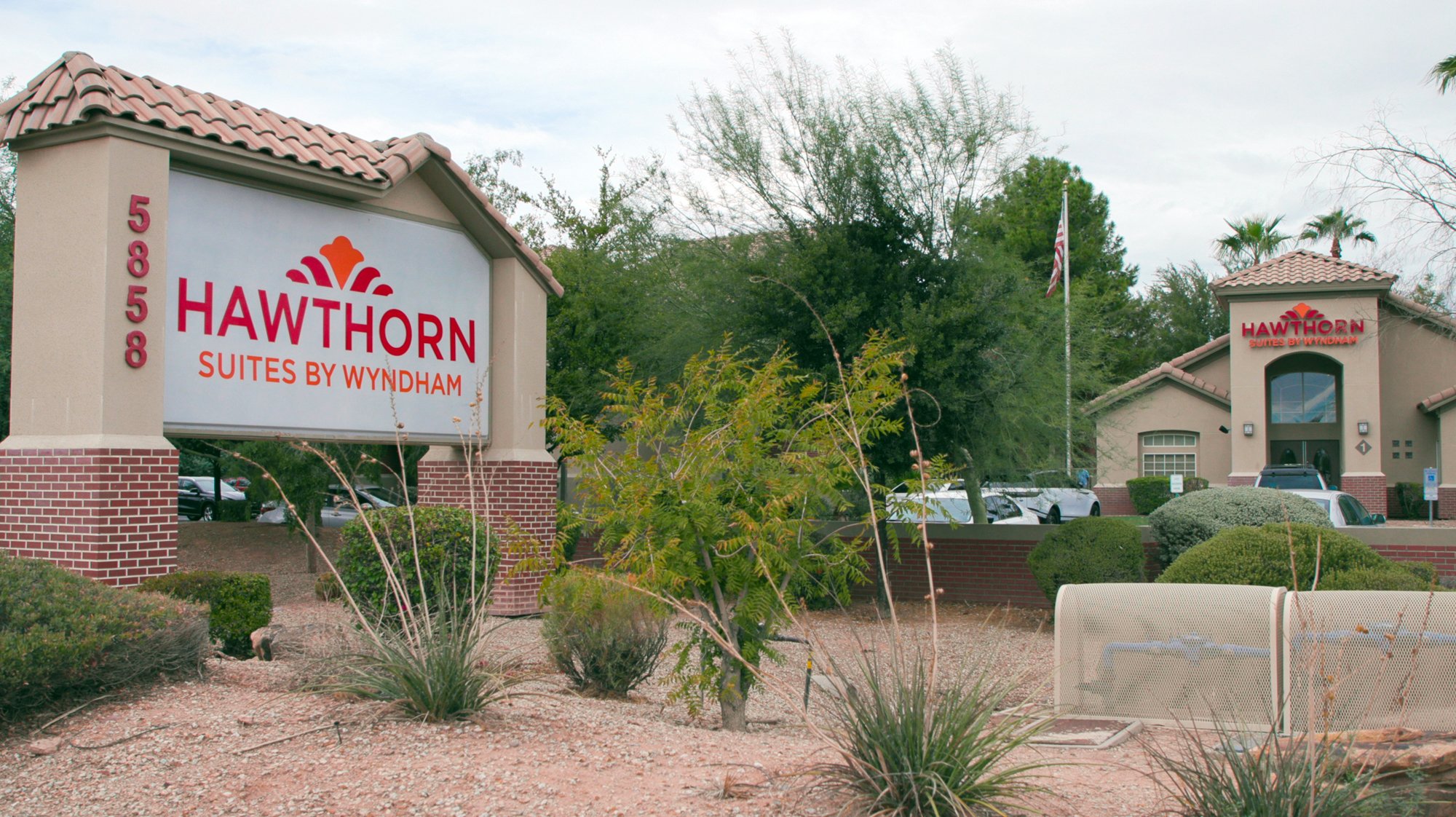
On the morning of April 11, agents with Homeland Security Investigations planned to arrest Warren Jose at a hotel in west Chandler, where he had been spotted the day before. But Jose headed instead to Ahwatukee Foothills, leaving agents scrambling to devise a new arrest plan. (Photo by Joel Farias Godinez/Howard Center)
While agents scrambled to catch up, team leader Richard Mortensen devised a new plan of arrest.
Agents believed the Trailblazer had only two occupants, though they later acknowledged they couldn’t see through the vehicle’s dark tinted windows. They were convinced the occupants knew they were being followed. In statements to police, the HSI agents said the suspect vehicle had made erratic lane changes indicative of “counter surveillance” measures and a brief stop in a parking lot, during which they thought they saw a silhouette turn to look at them.
Inside the Trailblazer, tensions were rising.
Jose said he awoke to Medina Thomas and Valenzuela talking about a truck that was following them. Medina Thomas told Jose she thought it was “a narc.”
A groggy Jose told Phoenix police that he looked at the unmarked truck and replied, “Nah, that’s not a cop. You would know if it’s a cop.”
If anything, Jose initially thought, it might be a rival smuggler. He told police it’s common for other smugglers to steal migrants as they were being transported and keep the payoff for themselves. It had happened to him before, with people who had lights on their car, he said.
Jose told the women not to worry and went back to sleep.
Meanwhile, Mortensen instructed his fellow agents to prepare for a “pinch” maneuver. The three F-150s would speed up to surround the Trailblazer, then force it to slow down and ultimately stop.
Agents twice tried but failed to execute the maneuver as the Trailblazer and pickups headed north on busy 48th Street, getting blocked first by another vehicle and then by a construction zone.
Finally, Mortensen decided, “there's not a lot of civilian vehicles around, let's conduct the pinch while moving,” an HSI agent later told police.
Homeland Security Investigations agents used a “pinch maneuver” to try to stop Warren Jose’s SUV. As they did, Jose’s SUV collided with an agent’s unmarked truck, sending the truck crashing through a concrete wall. (Graphic by Mike Barnitz and Joel Farias Godinez/Howard Center)
With unmarked HSI trucks in front of and behind the suspects, Mortensen pulled his blue F-150 to the outside lane next to the Trailblazer. Agents were instructed to activate their lights and sirens, although only the truck behind the Trailblazer did, the police report said.
As the truck in front slowed, the Trailblazer swerved several times into Mortensen’s truck, agents said, causing him to lose control of the pickup, which plowed through the residential block wall.
The Trailblazer then hit the street curb and spun around before coming to rest facing the wrong way. Inside the vehicle, chaos erupted and someone yelled “Police!”
HSI agent Marcus Camacho was now facing the Trailblazer, and he said he rammed his truck into it to prevent the suspects from fleeing. The military veteran said he then began “taking rounds” from what sounded like an AK-47 and noticed his shoulder was bleeding. He jumped out of his truck, crouched behind the open driver’s door and began firing his Glock 19 pistol at the Trailblazer.
By that point, HSI agent Jeff Hemphill had pulled alongside Camacho, also facing the suspects’ vehicle. As he was getting out, he said he heard “rounds go through my windshield.” Hemphill dropped to the ground and radioed “Shots fired.”

Homeland Security Investigations agent Richard Mortensen’s blue Ford F-150 stopped atop a toppled tree and concrete debris in a backyard in Ahwatukee Foothills. The truck careened into a concrete wall during a “pinch maneuver” as agents were attempting to stop a suspect vehicle. (Crime scene photo: Phoenix Police Department)
After his truck crashed through the garden wall, Mortensen said he “immediately opened” his door, saw the Trailblazer bumper-to-bumper with an HSI truck and heard gunfire. He ran toward the scene and took cover behind a tree across from the SUV’s driver door, he said.
“At that point, I’m looking at the vehicle. It has dark tinted windows, hard to see in, but I can, through the windshield, I can see the silhouette of a rifle,” Mortensen said in his interview with police five days later. “The rifle appeared to look like an AK-47, and I could see the rifle coming back and forth as if someone was shooting it.”
His lawyer interjected: “When you say ‘as if,’ did you believe that somebody was shooting that rifle?”
“I knew they were shooting the rifle, and the direction it was pointed was at the direction of the officers that were there on scene,” Mortensen responded.
The agent said he opened fire on the driver of the Trailblazer with his Sig Sauer .40-caliber semiautomatic pistol and emptied at least three magazines before ceasing fire.
More than 100 rounds were fired in just over 30 seconds, about 80% of them from agents’ guns, the police investigation found.
Bryan Altieri, who was a passenger in Mortensen’s truck, described being the last Special Response Team member to reach the shooting scene. He’d struggled to get out of the crashed truck because his door was partly blocked by the downed tree. But once out, he said, he grabbed his M4 rifle and ran toward the shooting.
“There was lots, a lot of gunfire going on at that point,” Altieri told police in an interview five days later. “The vehicle was extremely, extremely difficult to see inside. The windshield was significantly shot up. … It was very hard to pick up anything inside the vehicle.”
Altieri said the Trailblazer’s doors were closed and that bullets appeared to be coming from inside, closer to the passenger’s side of the windshield.
Looking through the optic of his rifle, Altieri thought he saw “the right arm of the driver extended out at an angle towards the passenger side windshield.” He fired two to three rounds at the driver, he said.
“I’d also like to note that at this point I actually thought the driver was still Jose, that I thought he was the driver of the vehicle the entire time,” Altieri said.
More than 100 rounds were fired in just over 30 seconds, about 80% of them from agents’ guns, the police investigation found.
Inside the Trailblazer, Medina Thomas slumped dead in the driver’s seat from three bullets to the head and four to her neck and shoulder, the Maricopa County Office of the Medical Examiner said. Jose, in the front passenger seat, was gravely wounded by several bullets, including one to his head.
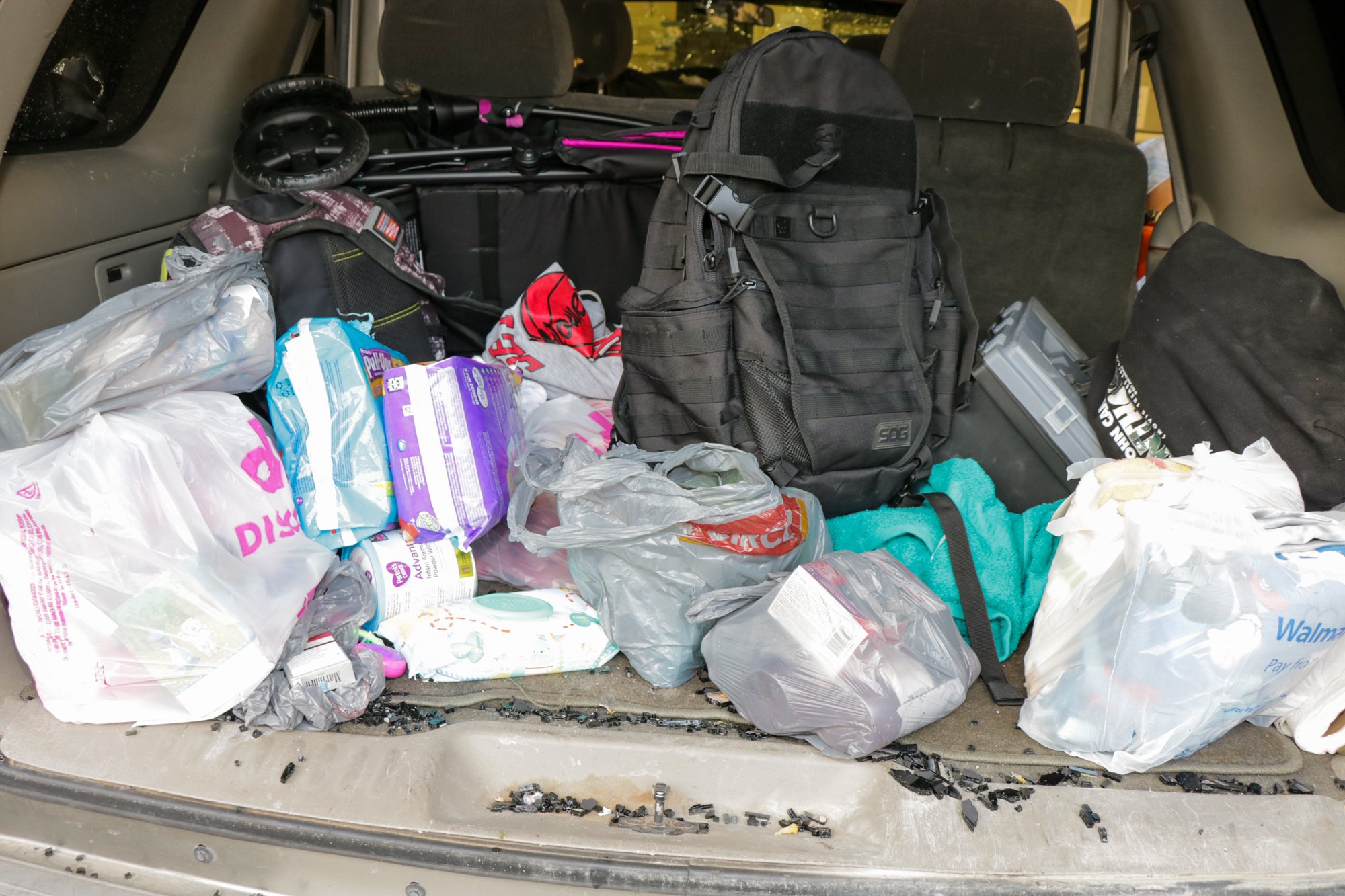
Recently purchased children’s items fill the back of the Chevrolet Trailblazer used by Warren Jose, who was suspected of human smuggling. “Thank God there’s no kids in that,” a Phoenix police officer commented as he looked in the back. (Crime scene photo: Phoenix Police Department)
The backseat occupants – Valenzuela and the two migrants – huddled on the floorboard, wounded or injured to varying degrees. When agents realized there were others in the vehicle, they ordered them to get out and move to the neighborhood sidewalk, where signs warned of golf cart crossings.
In her interview with police just a few hours after the shooting, a distraught Valenzuela recalled that when shots rang out. “I looked at Theresa, and she was gone.”
One of the paramedics examining Medina Thomas’ body noted she had been shot through the eye, adding, “That’s a kill shot.” Another paramedic muttered “savage.”
Curious residents ventured out for a look after the gunfire subsided and police sirens started sounding through the neighborhood.
By that point, HSI agents had pulled Jose’s limp body from the Trailblazer and rolled him onto the street, face up. An AK-47 was on the ground nearby, police body cam video showed.
“The scene looked like chaos because there was a body laying in the street,” said Nick Dalton, who lives with his mother a few blocks from the scene.
Dalton said he thought Jose was dead because at first no one was tending to him while HSI agents were being loaded into ambulances and driven away.

Nick Dalton stands in the driveway of his mother’s home in Ahwatukee Foothills, a few hundred yards from the April 11 shootout between Homeland Security Investigations agents and suspected human smuggler Warren Jose. “Why would they do it here?” asked Dalton (Photo by Joel Farias Godinez/Howard Center)
A cluster of Phoenix first responder vehicles sat in the center of the normally well-traveled, five-lane street, surrounded by bullet casings and broken glass, the bullet-riddled Trailblazer bumper-to-bumper with a gray unmarked HSI truck.
Black tire marks streaked the nearby trail, often busy with bicyclists and neighbors walking their dogs. The front end of the agent’s truck lay halfway in a backyard, surrounded by tree limbs and other debris.
Several residents found bullets in their yards, on their roofs and even lodged in the side of one home. Many were rattled by the shooting and unwilling to speak about it, even months later.
“Why would they do it here?” asked Dalton, who was especially troubled by the fact that he didn’t hear sirens before the shootout. “I would assume that they would try and do it somewhere a little bit safer.”
Dalton said he’d never heard of HSI until after the shooting, when he Googled it.
If someone in an unmarked vehicle had tried to pull him over, saying they were with HSI, he said, “I would tell them no, get the Phoenix police.” Dalton spoke from experience, having been arrested for driving under the influence.
He added that it was “kind of scary” that relatively unknown federal agencies “have the right and the power to enforce the law with physical and lethal force.”